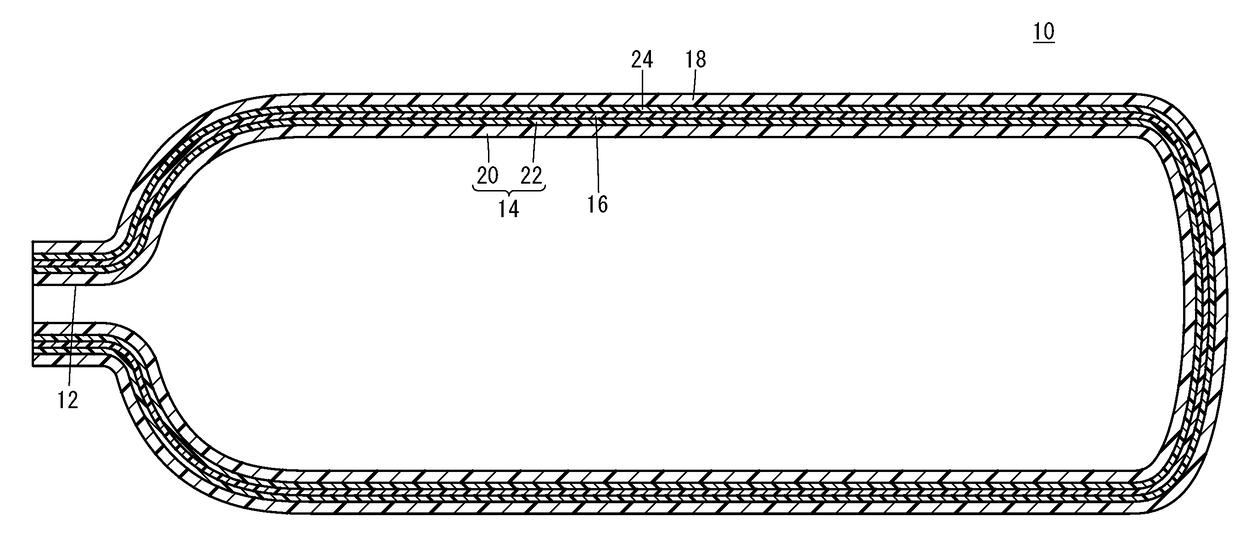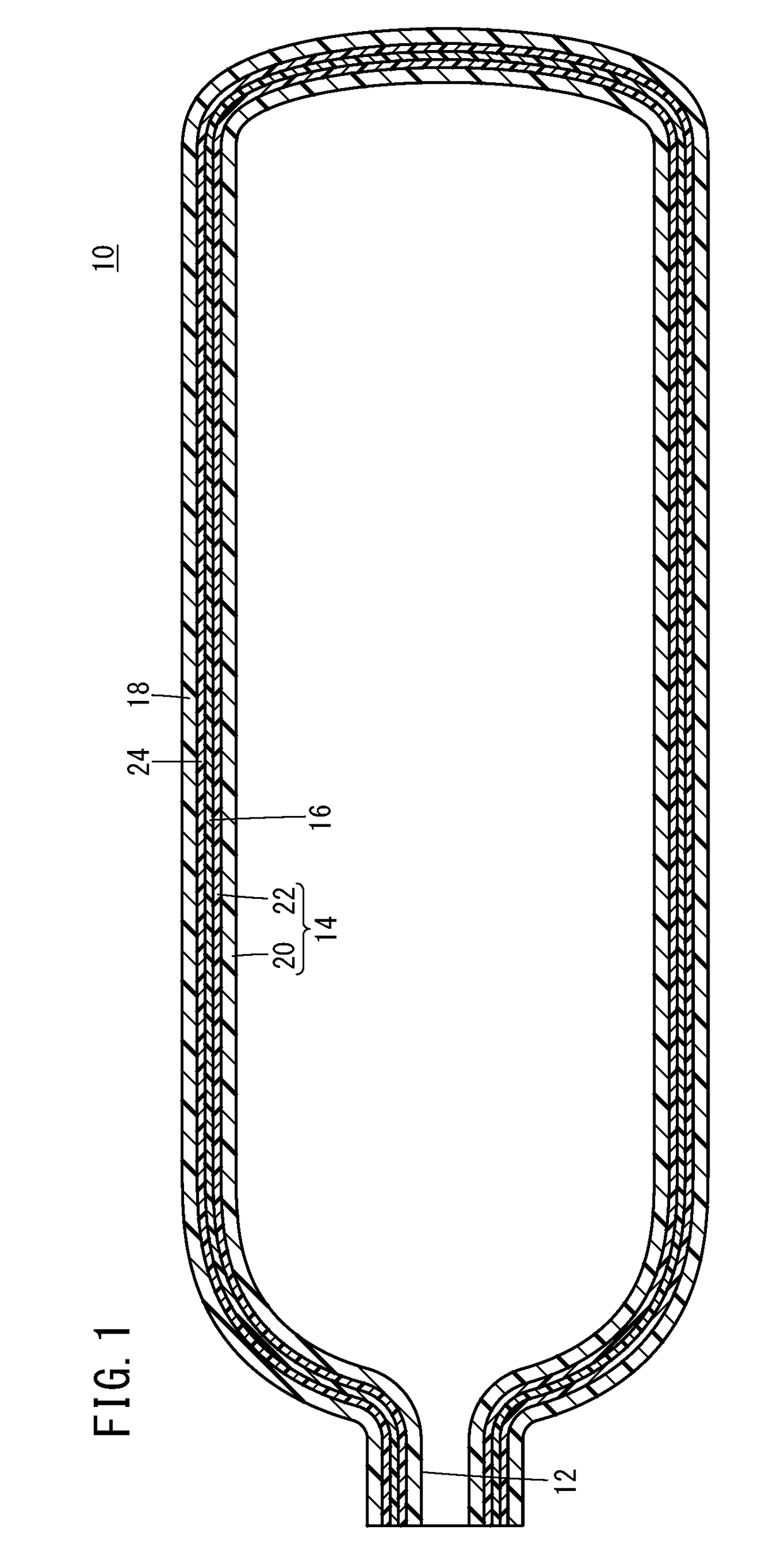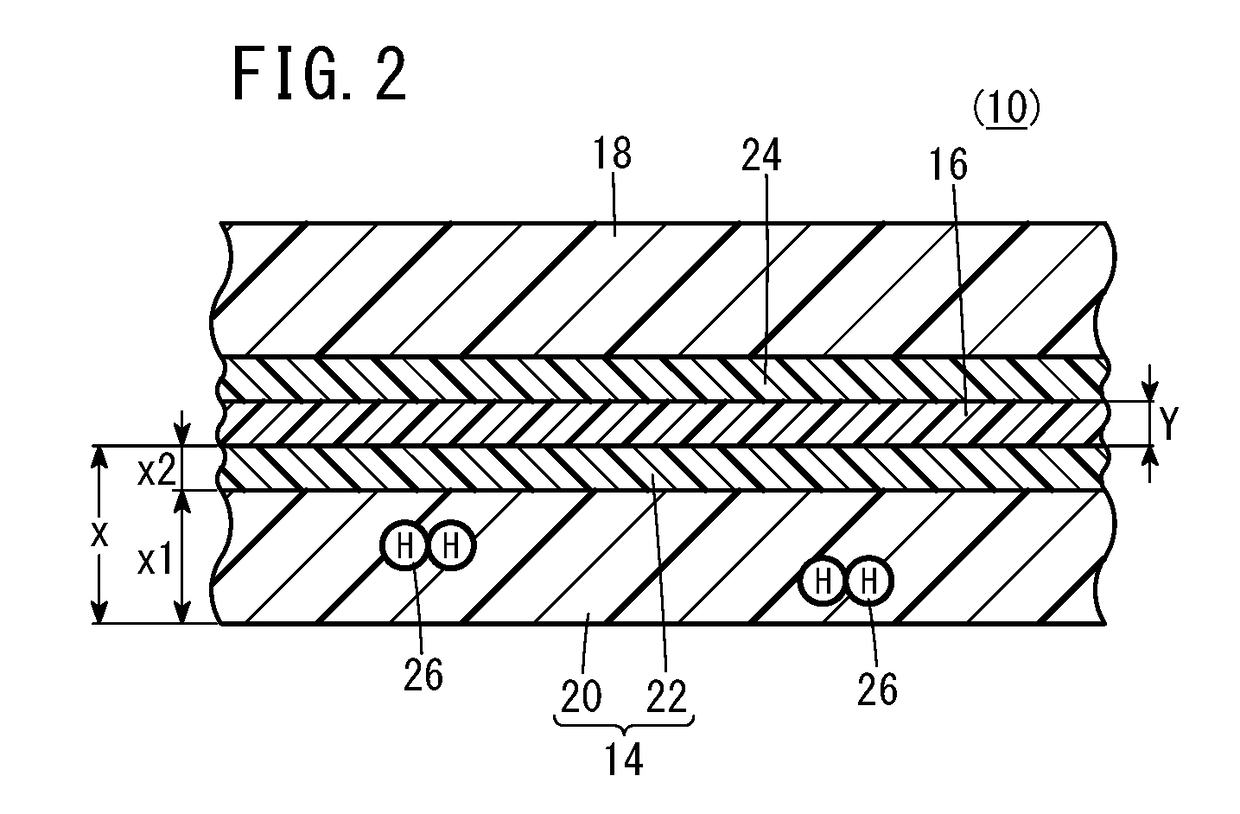Hydrogen storage container
a technology of hydrogen storage container and inside resin, which is applied in the direction of synthetic resin layered products, packaged goods, packaging foodstuffs, etc., can solve the problems of inferior hydrogen barrier ability of polyethylene naphthalate in the inside resin layer to metal materials, cracks and deterioration of the inside resin layer, etc., and achieve the effect of improving durability
- Summary
- Abstract
- Description
- Claims
- Application Information
AI Technical Summary
Benefits of technology
Problems solved by technology
Method used
Image
Examples
examples
[0064]Multilayer test specimens were each produced by stacking a first layer of HDPE resin, a first adhesive layer of LDPE resin, a barrier layer of EVOH resin, a second adhesive layer of LDPE resin, and a second layer of HDPE resin in this order. The multilayer test specimens were different from each other in total thickness of the first layer and the first adhesive layer. The total thicknesses of the first layer and the first adhesive layer were set to be 0.3 mm, 1 mm, 3 mm, 4 mm, and 5 mm respectively.
[0065]Each of the multilayer test specimens was left in a pressurized hydrogen atmosphere at 50° C. for a predetermined time. In this treatment, the exposed surfaces of the first and second layers were pressed by the pressurized hydrogen gas. Then, the hydrogen gas pressure was reduced to a predetermined pressure, and each specimen was cut in the thickness direction.
[0066]Thus-obtained exposed cut surface of the first layer was evaluated with respect to whether a crack was generated...
PUM
| Property | Measurement | Unit |
|---|---|---|
| thickness | aaaaa | aaaaa |
| thickness | aaaaa | aaaaa |
| thickness | aaaaa | aaaaa |
Abstract
Description
Claims
Application Information
 Login to View More
Login to View More - R&D
- Intellectual Property
- Life Sciences
- Materials
- Tech Scout
- Unparalleled Data Quality
- Higher Quality Content
- 60% Fewer Hallucinations
Browse by: Latest US Patents, China's latest patents, Technical Efficacy Thesaurus, Application Domain, Technology Topic, Popular Technical Reports.
© 2025 PatSnap. All rights reserved.Legal|Privacy policy|Modern Slavery Act Transparency Statement|Sitemap|About US| Contact US: help@patsnap.com



